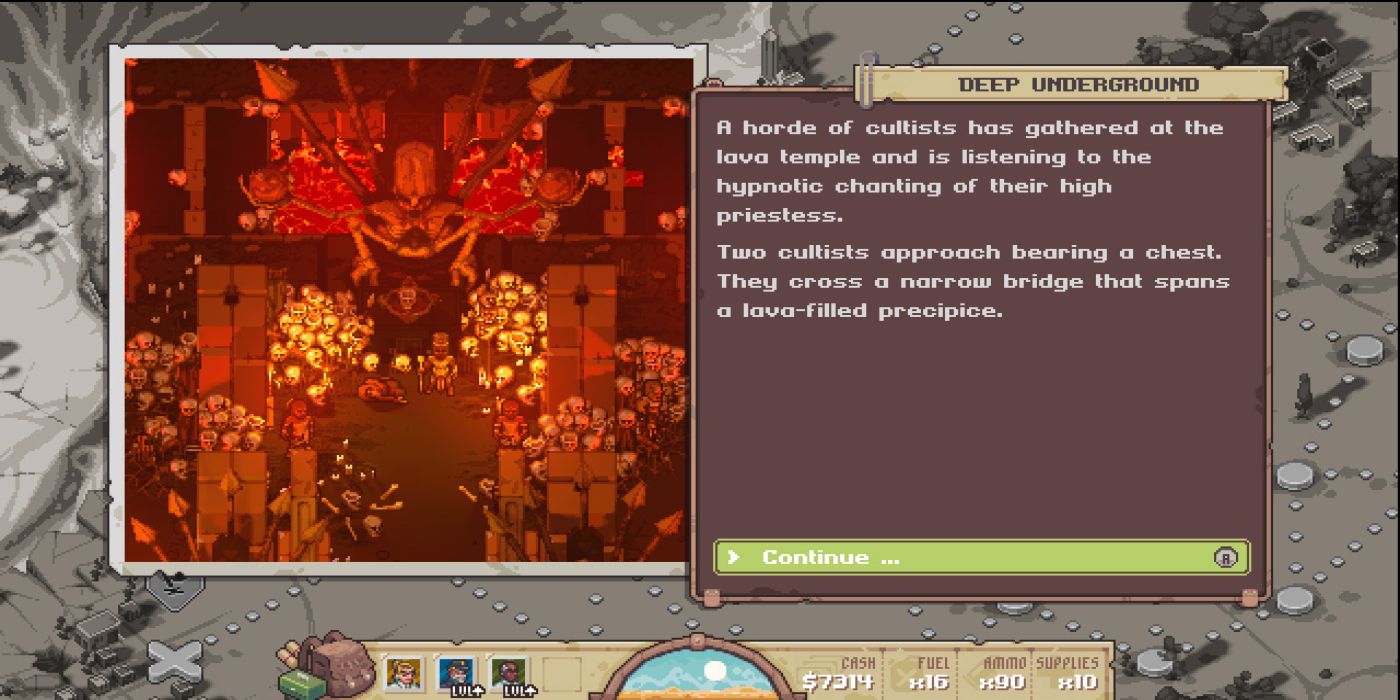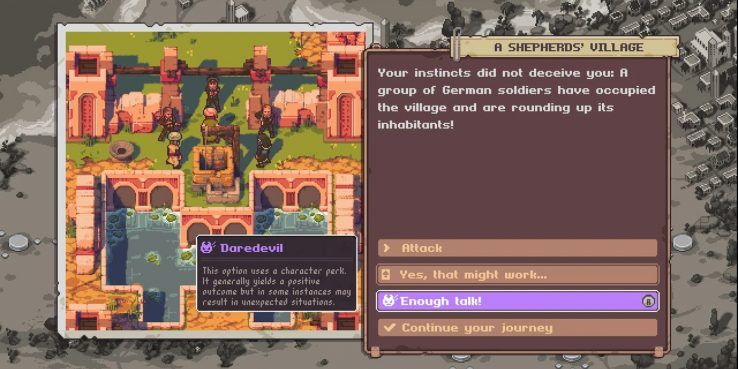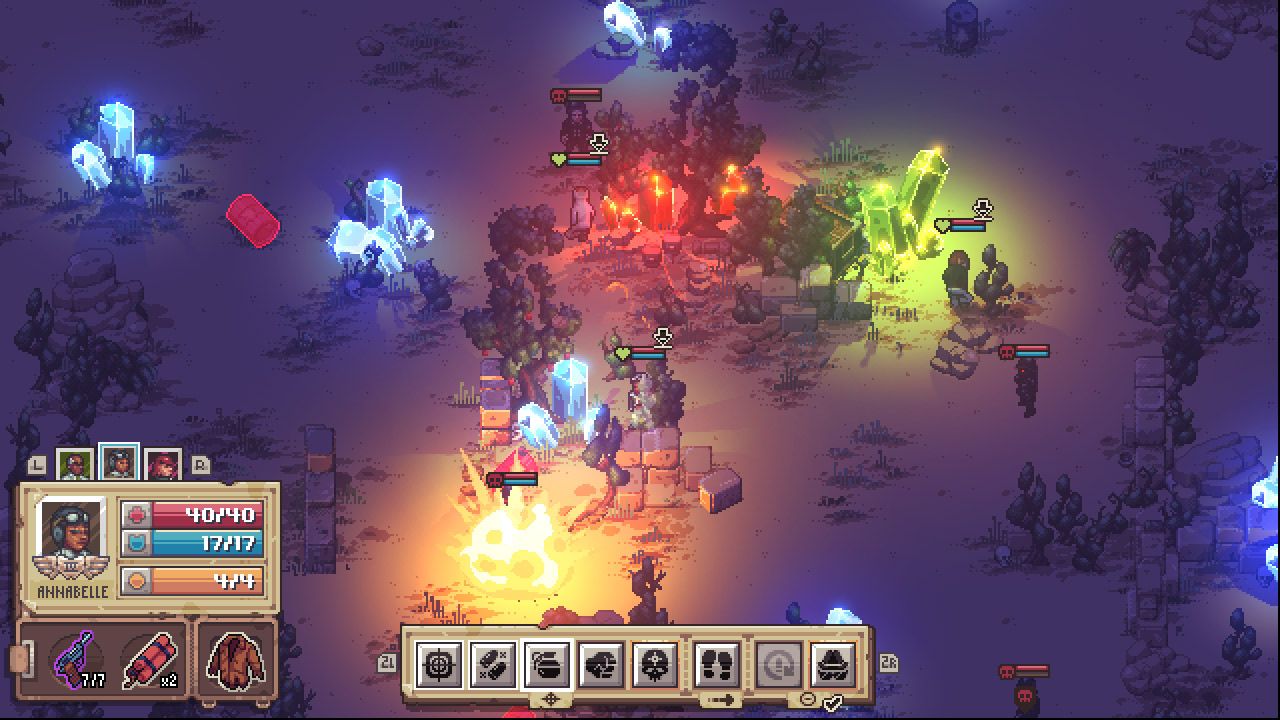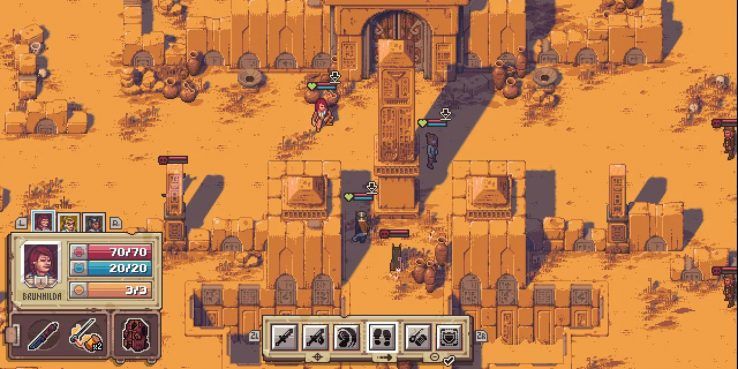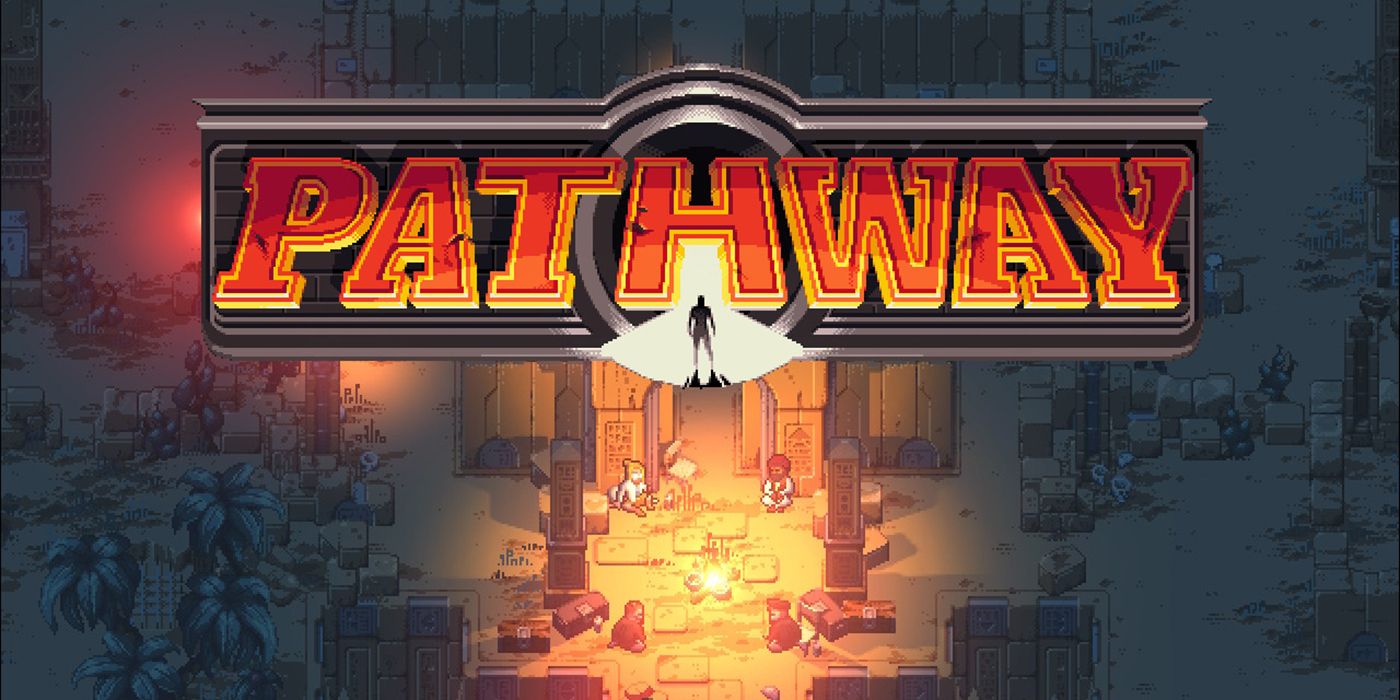Pathway came to the Switch on May 27th this year and brought fans the best of the beautiful turn-based game in a more accessible format. Now, fans can play Pathway wherever the mood strikes them, and take all of their favorite 1930s adventures on the go. Set in 1936, the game follows a band of adventurers who've set out on an adventure in the hopes of finding mysterious artifacts and hidden treasure. Players will assemble their teams and venture forth into the ever-changing landscape in this rogue-like turn-based game.
Ahead of its Switch release, Game Rant was able to ask Simon and Stefan Bachmann, developers at Robotality, some questions about the inspiration and goals behind Pathway's gameplay and art style. The Bachmann brothers were more than happy to share some details about why they chose the WW2 setting and vibrant pixel-art style for Pathway. It was even revealed that the Switch port of Pathway faced some challenges in development, and almost never came to be.
Q: What effect did ‘choose-your-own-adventure’ books have on Pathway?
Simon: As a kid I loved reading and playing these (choose-your-own-adventure) books and I was astonished how efficient they were in giving you the feeling of interactivity and that your decisions have a meaning. This decision making was one of the inspirations we took from these books when we designed the events side of Pathway. We wanted to create this same feeling of wondering, what would happen if I had this other character with me and had chosen differently?
Q: Why did Robotality decide to make another turn-based game after Halfway?
Stefan: Well, the biggest reason is probably that we are big fans of the turn-based strategy games genre. Games like Jagged Alliance, Incubation, and the original X-Com were important games to us growing up. We've seen a bit of a resurgence of the genre lately, spearheaded by XCOM: Enemy Unknown. We definitely think there's still lots to be explored in this space.
Q: In a previous interview it was mentioned that Pathway takes a lot of inspiration from the TinTin comics, so how was Pathway’s setting inspired by The Adventures of TinTin?
Simon: The Adventures of TinTin were very influential to us as kids. We loved the crazy stories TinTin went through...Unearthing strange things with his team mates and then always just narrowly escaping certain doom thanks to his wits. That feeling was a huge inspiration of the core loop for Pathway. You may notice a little homage to certain characters from Hergé's comics too. We always thought of the 5 adventures in Pathway as comic books you read/play after each other: Unrelated stories but same cast, taking place in the one universe and time period.
Q: Is there any media that inspired Pathway’s vibrant pixel art style?
Simon: Yeah, there are several inspirations.. Two non-game influences stand out the most here: The collective works of Studio Ghibli and The Adventures of TinTin and their colorful art style.
On the game side of things I was always a huge fan of games by the now defunct team “Thalion” and “Bitmap Brothers." They made gorgeous pixel art games like Albion (Bluebyte, Ex Thalion) and Chaos Engine.
Q: Does Pathway’s cover system take any cues from other games?
Stefan: There's no denying that the cover system is inspired by X-COM: Enemy Unknown. In Pathway our cover system is simplified slightly. Part of the reason for this is that we wanted the combat to feel fast-paced and action packed whilst still staying accessible to people not familiar with the genre.
So in Pathway, if you have a straight shot at an enemy you are guaranteed a hit. The only time we introduce randomness into the formula is when the enemy is behind a cover. We feel like this cleverly removes a lot of the most frustrating situations common in other games of the genre. Ever stood right next to an enemy in games of a similar genre, practically holding a gun to their head, yet missing the shot? Our system doesn't allow for those kinds of situations.
Q: How important is the lighting in setting the mood in Pathway?
Simon: In the beginning when we started work on the in-house tech here, it was really just an experiment to answer a question I had: Can you combine pixel art and pixel perfect shadows together and still make it look like proper pixel art? After a year or so of experimenting with this tech experiment we actually managed to make it work. Back then Pathway was not yet the game it is now. It went through several design iterations that happened in parallel to these tech developments.
When we finally settled on our 1930s great wilderness desert/tombs setting we were also ready to use the tech and it was a perfect match: Having to visualize dark tombs and the hot sunny desert in a visually interesting way was a challenge. Having the possibility to work with a powerful fully dynamic light system helped immensely to make the different settings and moods look interesting and variable.
Q: Do you have any favorite Adventurers or a go-to team?
Stefan: Oof, tough question! I do enjoy taking Veduti and Brunhilda on my adventures.
Simon: I like Brunhilda too and also Shani. Recently I played more and more with a melee group only which have Shani, Brunhilda and Fantome in its team. It is a nice challenge to finish a hardcore run with these three and no guns. I call it the “Bring a knife to a gun fight!” challenge.
Q: What was the hardest part about porting Pathway to the Switch?
Stefan: Honestly, it's a small miracle we were able to make this work. Pathway is a bit of deceptively simple looking game. Yea the game has a very 2d retro/pixel art look, but the technology powering it is surprisingly complex. The dynamic lighting we deploy is only possible by essentially rendering most of the game as a 3d voxel scene. So at any given time, we are pushing hundreds of thousands of polygons. It took a lot of work (and some sacrificial offerings) to get it to run just how we wanted it to. But the game looks absolutely fantastic on the console, so it was definitely worth the time.
Simon: Yeah definitely getting the tech run smoothly in handheld mode was a challenge and reducing load times. The Switch is of course not as fast as a lot of gaming PCs, so when it comes to loading huge amounts of data we had to optimize our data format quite a lot to reduce loading times from initial multiple minutes to only two or three seconds for each event. On top of that getting a mouse only game work nicely with gamepads was an interesting challenge as well.
Q: How does the Switch’s ease of access lend itself to Pathway’s gameplay?
Stefan: The game is designed in a way that you can easily pick it up for 10-15 minutes at a time and then put it aside until another time. Pacing was an important design consideration for us. The handheld mode for the Switch is of course perfect for this kind of game style. You can always have an adventure going and pick it up, run through a few events, maybe engage in a combat or two and then pause it. I think this is a direct consequence of being parents, this is really the only way we get to play games these days!
Simon: The fun part is that when we designed the original PC version of Pathway, the pick-up-and-play-for-a-bit style was already particularly important to us as fresh parents. We always thought it would be the perfect fit for the Switch, we just did not have the resources to do a port right away.
Q: What led to the decision for a Switch port?
Stefan: Initially we didn't think we could overcome the technical challenges to make it a reality. After investing some time into an initial port we realized that hey maybe we can actually pull this off. Another consideration was that one of the most requested features for the PC version was controller support. We were able to make that happen at the same time as the Switch port.
Q: Are you planning any further content updates like V1.1 and V1.1.4?
Stefan: Not in the near future. We love Pathway and we have a lot of ideas how we could expand on the game. But we also need a bit of distance from the project. We've spent almost 5 1/2 years working on this and it's time for something a bit different. But I have no doubt we'll be revisiting the game. In a lot of ways, it feels like we only just starting exploring what we could do within the framework of the game.
Simon: All that being said, of course we will continue supporting the game and patch issues and smaller features in it in the foreseeable future. We don’t abandon our games.
Q: Did Pathway's stint as a free game on Epic last year open any new opportunities?
Stefan: It was a fantastic opportunity for us. It introduced the game to so many new players! We saw a big influx of people joining our community and playing the game. Very comparable to when it first launched.
Q: Does the addition of controller support open up Pathway to other ports?
Stefan: We're currently focusing on our next project just now.
Q: What effect did Covid-19 have on development, and how did your team learn to adapt?
Stefan: Interestingly enough, not all that much! Our team was already mostly decentralized and spread around the globe. We did however put a bit more focus on team interactions recently by setting up a virtual office on discord. We used to do a lot more via chat. These days, most of our communication happens over voice and video chat. I think the pandemic has definitely pushed us towards more direct interactions like this.
[END]
Pathway is available on PC and Switch.

